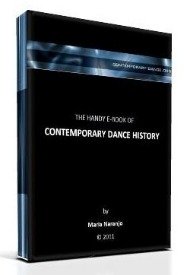Theory concerning a hierarchy of muscle tension
by Noel Levan
(Harrisonburg, VA, USA.)
Hola Señora,
Me llamo Noel. I am in Virginia, USA. I apologize for not being able to continue this request in Spanish. I hope for your assistance in a matter of research in dance theory. Many years ago I was introduced to a woman who had a theory concerning a "hierarchy" of muscle tension & how dancers with a particular hierarchy would be much more comfortable (in their bodies) while addressing themselves to modern dance when contrasted by tap dance or/and ballet. She hypothesized that there exist four (4) types of muscle tension & that each one corresponds to a type of dance; i, e., each form of dance is governed by its particular form of muscle contractions. She stated the four types as: posturer - for this form of dance, the positions between movements are as relaxing as any movement. As an example, a ballet dancer is usually as comfortable with one or both hands held above the head as though they were at his/her sides, limp.
The arrestor's movements are like marching, very earth-bound.
The assistor's movements are fluid & associated most often with modern dance.
And the perseverator for whom rhythmic tapping or/and rocking are associated with tap dancing & modern jazz.
I wonder whether you are familiar with the theory I've related here & whether you could assist me to recover the theory in its full text. I can not (you see) recall the name of this theories' inventor/writer and I do not have access to your resources nor experience.
I appreciate any response you may offer. I am seeking this information as part of a community effort to promote dancing such as is practiced within the organization Dance New England www.dne.org.
Thank you for consideration of this request.
Carefully,
Noel Levan
Comments for Theory concerning a hierarchy of muscle tension
|
||
|
||
|
||
The handy e-book of CONTEMPORARY DANCE HISTORY:
The Dance Thinker is our occasional E-zine. Fill in the form below to receive it for free and join us.
Read:
"The Dance Thinker"
BACK ISSUES
Post contemporary dance announcements (workshops, auditions, performances, meetings and important news... it is free.)




